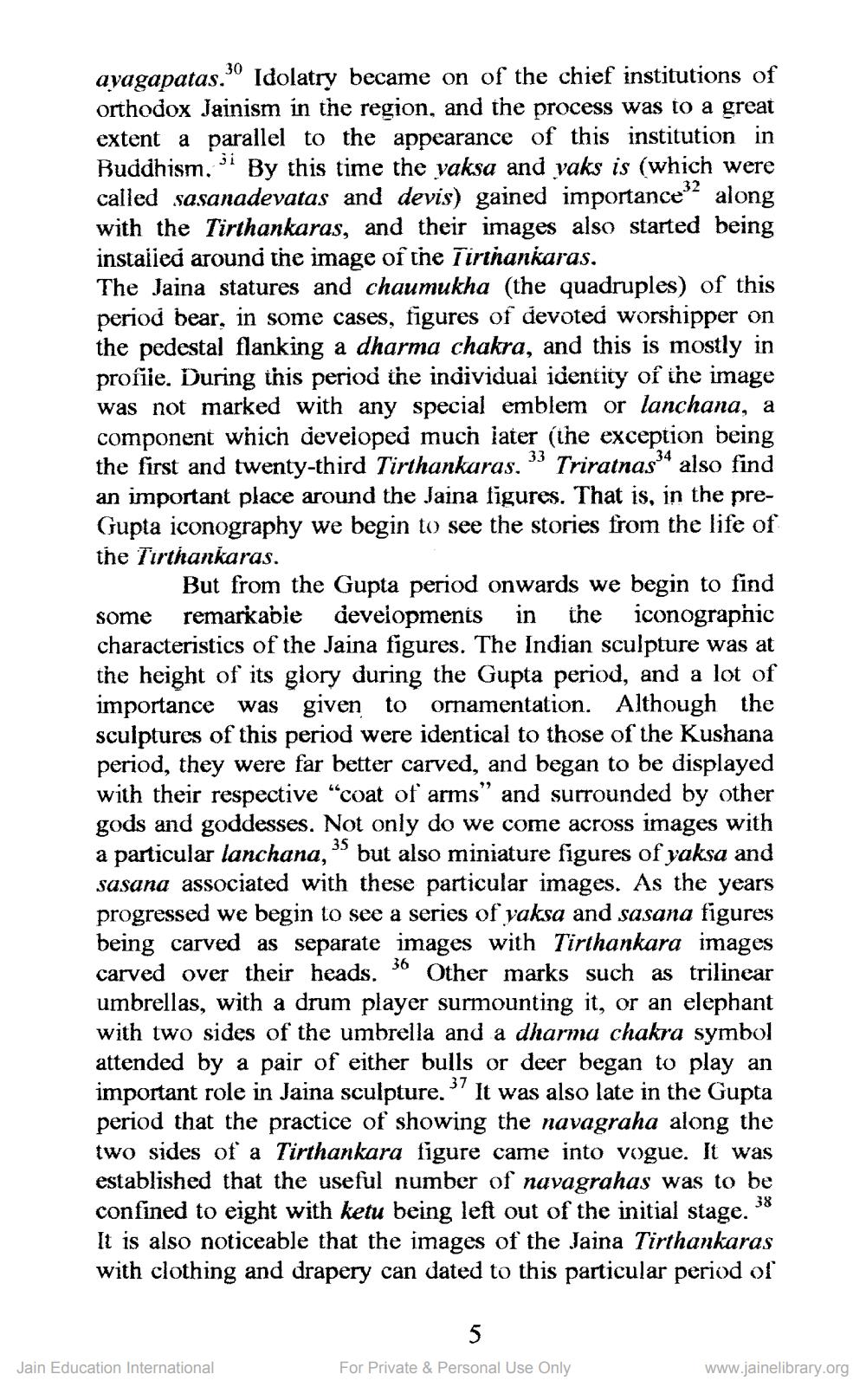Book Title: Jinamanjari 2001 09 No 24 Author(s): Jinamanjari Publisher: Canada Bramhi Jain Society Publication View full book textPage 9
________________ ayagapatas." Idolatry became on of the chief institutions of orthodox Jainism in the region, and the process was to a great extent a parallel to the appearance of this institution in Buddhism. Si By this time the vaksa and yaks is (which were called sasanadevatas and devis) gained importance" along with the Tirthankaras, and their images also started being installed around the image of the ī irinankaras. The Jaina statures and chaumukha (the quadruples) of this period bear, in some cases, figures of devoted worshipper on the pedestal flanking a dharma chakra, and this is mostly in profile. During this period the individual identity of the image was not marked with any special emblem or lanchana, a component which developed much later (the exception being the first and twenty-third Tirthankaras. Triratnasıalso find an important place around the Jaina figures. That is, in the preGupta iconography we begin to see the stories from the life of the Tirthankaras. But from the Gupta period onwards we begin to find some remarkable developments in the iconographic characteristics of the Jaina figures. The Indian sculpture was at the height of its glory during the Gupta period, and a lot of importance was given to ornamentation. Although the sculptures of this period were identical to those of the Kushana period, they were far better carved, and began to be displayed with their respective “coat of arms" and surrounded by other gods and goddesses. Not only do we come across images with a particular lanchana, but also miniature figures of yaksa and sasana associated with these particular images. As the years progressed we begin to see a series of yaksa and sasana figures being carved as separate images with Tirthankara images carved over their heads. 36 Other marks such as trilinear umbrellas, with a drum player surmounting it, or an elephant with two sides of the umbrella and a dharma chakra symbol attended by a pair of either bulls or deer began to play an important role in Jaina sculpture.” It was also late in the Gupta period that the practice of showing the navagraha along the two sides of a Tirthankara figure came into vogue. It was established that the useful number of navagrahas was to be confined to eight with ketu being left out of the initial stage. 38 It is also noticeable that the images of the Jaina Tirthankaras with clothing and drapery can dated to this particular period of Jain Education International For Private & Personal Use Only www.jainelibrary.orgPage Navigation
1 ... 7 8 9 10 11 12 13 14 15 16 17 18 19 20 21 22 23 24 25 26 27 28 29 30 31 32 33 34 35 36 37 38 39 40 41 42 43 44 45 46 47 48 49 50 51 52 53 54 55 56 57 58 59 60 61 62 63 64 65 66 67 68 69 70 71 72 73 74 75 76 77 78 79 80
